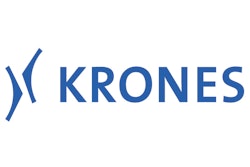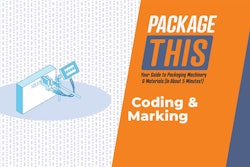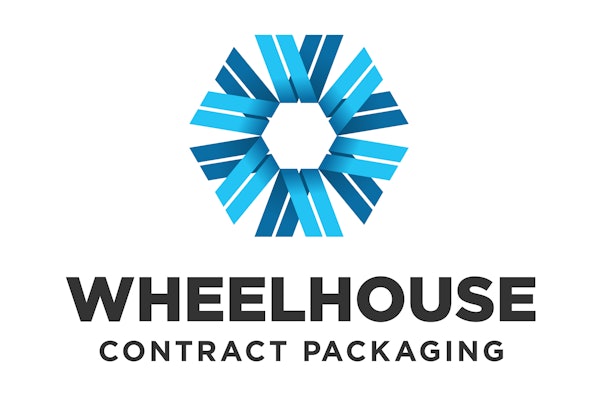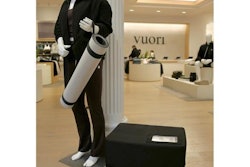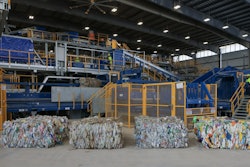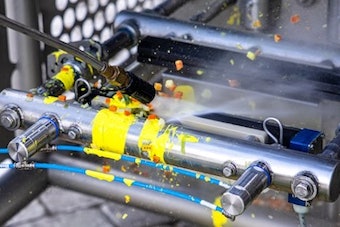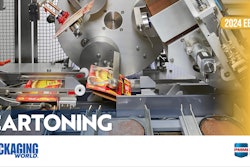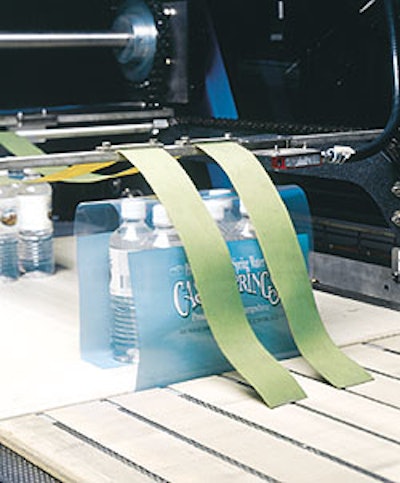
Continuing to upgrade equipment in its nine-year-old packaging line, Castle Springs Water Co. added new end-of-the-line equipment last year that permits the water bottler to offer retailers a broader line of multipack options.
For eight years, Mark Wiggins, now vice president of operations at the Moultonborough, NH, company, has wrestled with trying to provide company marketing people with the packs they need to service the market, and providing them all from a single packaging and filling line. As of this year, Castle Springs now fills two brands of water into ten different bottles, mostly differing sizes; eight are bottles made of polyethylene terephthalate, and two are glass bottles.
But beyond being able to switch its line to fill varying sizes and shapes, Wiggins also struggled to develop the capabilities to supply these bottles in an increasingly wide variety of multipack configurations that Castle Springs’ customers have demanded.
“When our sales people are talking with chain stores, we’re always trying to sell a whole portfolio of packages,” Wiggins says. “Customers want suppliers who can provide exactly what they want, so you almost have to show them all 10 bottles in a selection of multipack arrangements. This was the only way our company could be competitive with others. Many chains told us they wanted a little bit of many package configurations, and they wanted the convenience of billing a single supplier.”
In the past, the company packed bottles either into basket-carrier six-packs or into corrugated RSC cases. To respond to the needs of the marketplace, the company knew it had to “dress” the multipacks for more appeal while reducing costs. So Castle Springs began to look toward adding both a tray packer and a multipack bundling machine.
“The tray packer would eliminate the full corrugated box and allow us to go to a tray,” says Wiggins. “We also wanted to get out of our six-pack carrier and bundle the bottles with decorated, printed film. Together, these changes would cut costs and make us more competitive.” Castle Springs markets in 25 states, from Maine to Minnesota, south to Texas, as well as in the Caribbean.
Its overall volume this year is expected to total two million cases, all from a single bottling line. The secret to this variety is what Castle Springs calls the versatility of its “dry-end” equipment added last year on a turnkey basis from Krones (Franklin, WI). The critical parts of the new downstream equipment are a Krones Kettner Variopac FS film bundling machine and a Variopac TFS traypacker.
Matching speeds
Although Wiggins set out a list of six critical criteria when he looked at new equipment, probably the most important was the ability to match the output of Castle Springs’ existing packaging line. “Several years ago, the only secondary packaging equipment available was high output and very large,” says Wiggins. He calls such systems “dinosaurs” that could handle 700 bpm but wouldn’t fit into the Castle Springs plant.
Until recently, he says, few companies made machinery that served smaller bottlers like Castle Springs, operations that make up an estimated 80% of the market. Wiggins sought equipment with small footprints that could handle packaging lines producing at about 400 bpm. Krones Kettner, he says, was one of the first companies to design and make machines of varying sizes and speeds, equipment that would fit the space available.
However, the company also knew this equipment would have to meet other criteria, too. First, it sought a supplier that had expertise in turnkey projects because Castle Springs has a modest staff without engineers or project managers. “We’re small, and I’m also responsible for two other operations here,” Wiggins reports. “As the need arises, my management team and I work on the line.” In addition, the integration, installation, and commissioning of the line would have to be completed during the summer, the operation’s peak season.
Service and delivery
The supplier had to be able to skillfully design and integrate the equipment into the existing bottling line. “This was vital because we have just the single line,” Wiggins says. “Plus our business is very seasonal so we needed maximum flexibility. After all, we can’t afford to warehouse a million cases for the peak summer season.”
In line with this flexibility, another requirement was minimal production downtime. With the single line, Wiggins had to schedule his production and inventory around the downtime needed for the installation. This also meant the supplier had to be capable of meeting the delivery and installation deadlines—no excuses. Not only was installation planned for the peak summer 2000 season, but there was added pressure as well.
“Keep in mind that this is primarily a marketing organization,” the operations executive says. The new packs that were planned to come off the new equipment were already being presold. Along with this flexibility, the company knew it required the best in quick-response service. Because of the single packaging line, the company couldn’t afford downtime. “Not when we’re running two shifts for 20 hours per day,” Wiggins emphasizes. And because space for the equipment was an issue, so was parts warehousing. This meant fast availability of parts was another requirement.
Cost an issue, too
The last of the selection criteria was cost, but Wiggins says it was not a key concern. The company’s production and marketing success was so dependent on all the other factors that the price of the equipment wouldn’t be a deal-breaker. In the end, Castle Springs selected three equipment manufacturers and issued the requirements to them.
Based on its reputation, Wiggins’s past experiences with its equipment, and the way it addressed the list of criteria, Krones Kettner won the contract. “My career included stints with Anheuser-Busch and Evian, where I had worked with Krones equipment, so we decided it was the company to do the job,” he says. “We felt they would design the line as if it were their own.”
Its turnkey design effectively “took the operation from my labeler to my palletizer,” he says. Bottles from the labeler are conveyed to one of two downstream machines. If the bottles are to be multipacked, they feed into the Variopac bundler, where unsupported groups of bottles are shrink-wrapped in register with printed film from Bemis (Terre Haute, IN).
The bundles are wrapped in either a 2.5- or 3-mil three-ply mostly low-density polyethylene film that’s been flexo-printed in three to six colors. Film widths range from 11” up to 14-1/2”, with print repeats from 26-3/4” to 32-3/4”. “We’re the only company I know that uses a three-layer film for these bundles,” says Dan Bloedow, vice president of business development for Bemis. “It produces excellent clarity, and it has great shrink tension. That’s important for unsupported bundles.”
Bemis also supplies the straight LDPE film used to overwrap loose bottles in the corrugated trays. Castle Springs buys either a 2- or 2.5-mil film that serves as a “dust cover” and a handling aid. “It only has to be strong enough for workers to be able to grasp the bull’s-eyes on the ends to lift the pack without ripping,” Bloedow says.
Handles for some
These packs then pass into or through a Cefma handle applicator from Polypack (Pinellas Park, FL). Castle Springs bought the applicator and had Krones integrate it into the multipack handling.
Currently, Wiggins reports, the only pack that receives the tape and paper handle is a six-pack of 1-L plastic bottles. “It’s a big and heavy pack, and the handle is a nice extra feature,” he says. But he doesn’t rule out handles on new packs in the future.
The Cefma is primarily a paddle-type pressure-sensitive tape applicator once a paperboard label is affixed to the tape before applying to the bundle. The center of the applicating arm has a gripper that holds the tape/label combo until application. Once the tape is applied to the leading edge of the bundle, the other end of the arm carries the tape to the trailing edge where it is also sealed and cut from the roll.
Emerging from this applicator or from the shrink bundler, the units are conveyed to the infeed of the Variopac Multipacker, where various counts are loaded onto corrugated tray blanks that are sealed around the bundles.
Now cutting costs
Initially, the tray packer was used to wrap and shrink film around the trays, whether the trays were filled with bundles or loose bottles. “We knew this was overkill, but my concern was that because we double-stack pallets in the warehouse, we needed to ensure the stability of these loads with nice, tight trays,” Wiggins says.
Now, he says, the only trays that are overwrapped and shrunk with film are those containing loose bottles, in either 8- or 12-oz or 0.5-L sizes.
The new equipment, Wiggins says, has automated a lot of formerly manual operations, and that’s reduced Castle Springs overhead. “When we eliminated the labor for loading the basket carriers, that was pure cost savings. Then replacing the RSC with a tray was additional savings,” Wiggins adds.
But the real benefit is the flexibility to produce those 60 SKUs. “We now have a whole new variety of multipack options to take to our customers. Now they regard us as being competitive with companies that are much larger,” Wiggins concludes.





